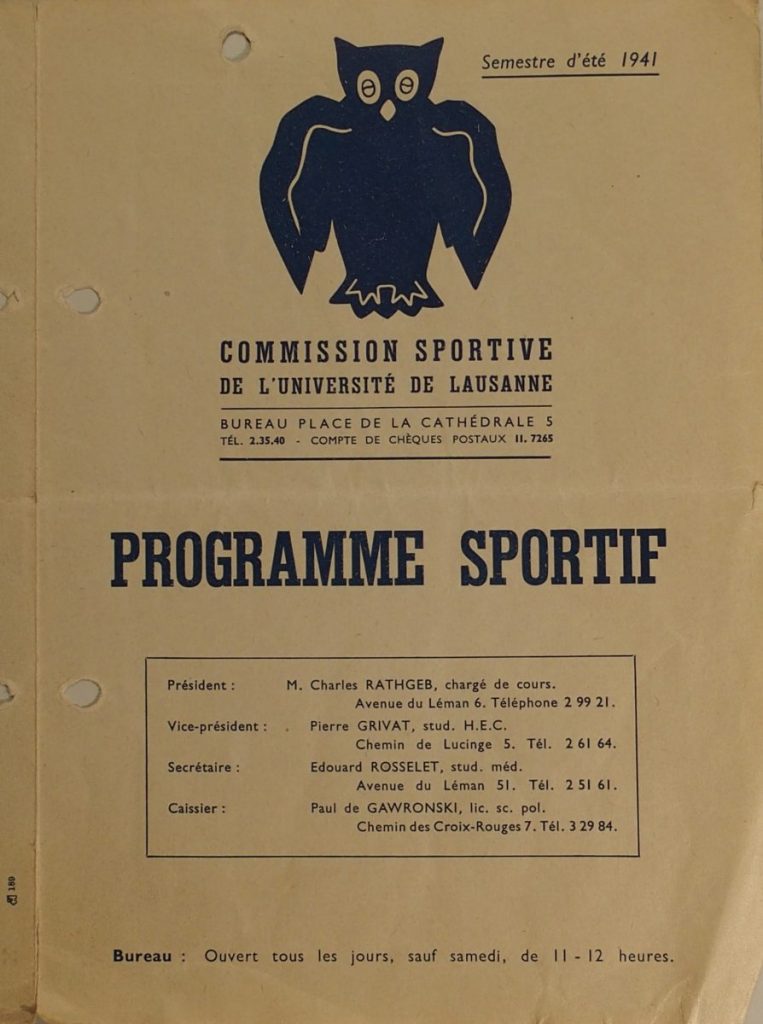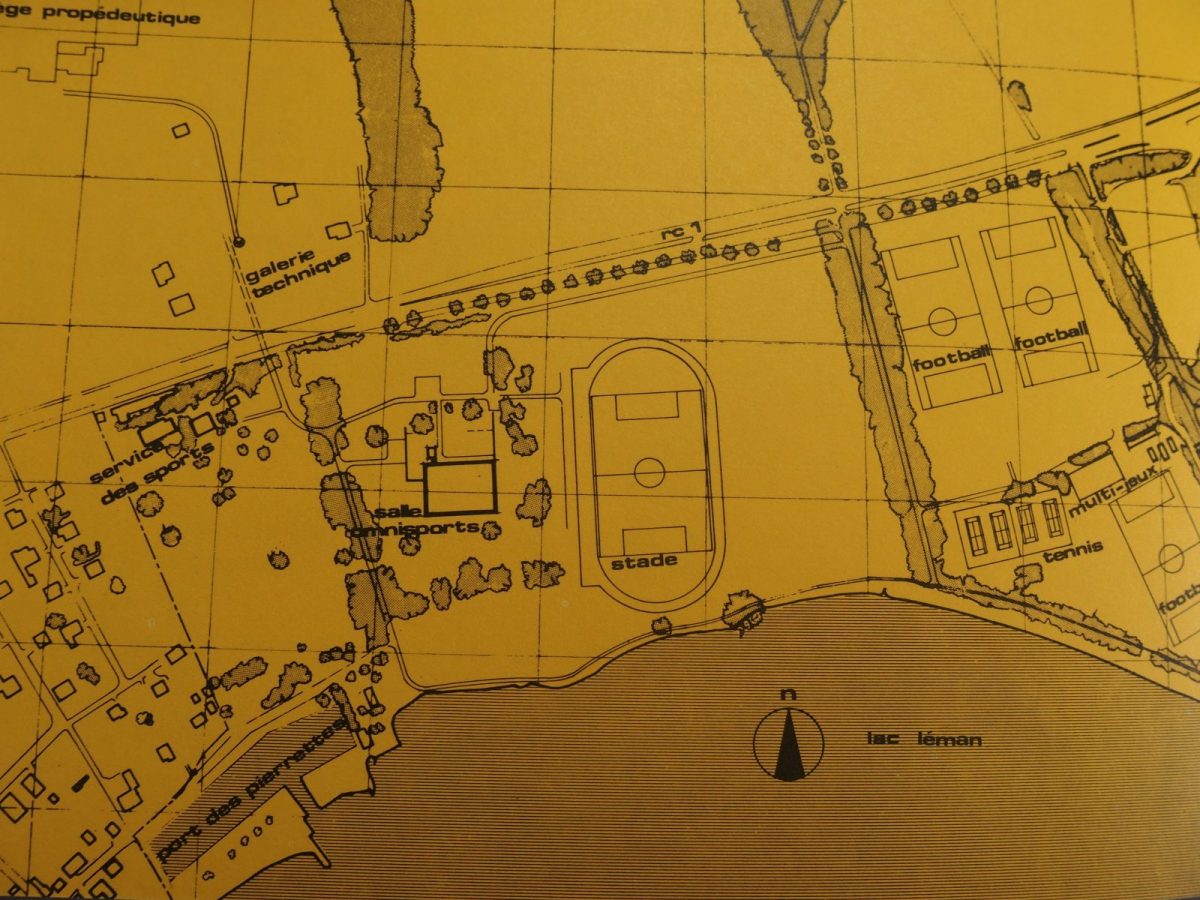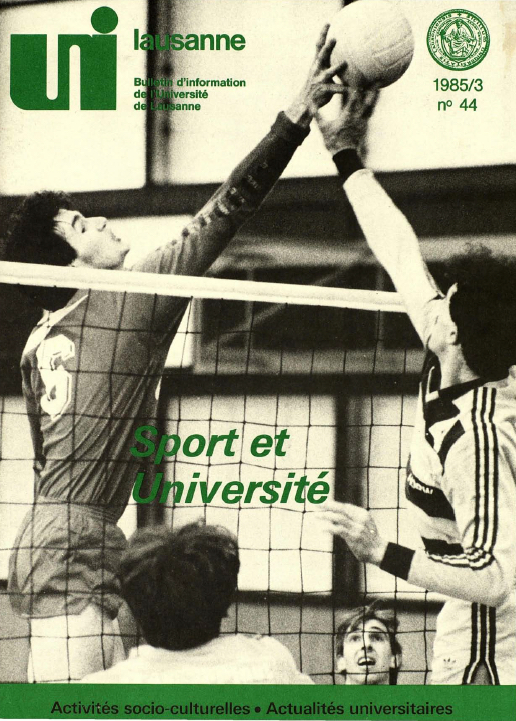Sport around Lausanne’s universities… A history of more than a century
By Grégory Quin
In the middle of the 19th century, gymnastics and sports movements were closely associated with youth and education… often having military motives, a necessity imposed by the context during a few more decades. Thus, within the former Academy, one of the first local gymnastics societies was created in the 1860s, on the initiative of a group of students whose training would become more and more regular.
However, it took a few decades to see the first development of a real “university sport dynamic”. Thus, in the spring of 1920, Francis Messerli’s “physical culture courses” were integrated into the semester program, but they were still optional and poorly attended. Established in 1941, the Sports Commission of the University of Lausanne publishes the same year the very first student program for the summer semester, the adventure of Lausanne university sport then begins for good.

In 1946, the average participation in those courses concerned about a hundred students out of 1’200, and gradually numbers will increase, even if at that time the lack of real infrastructure and the installation of the campus in the middle of the old town did not really help the first promoters.
In the early 1960s, the number of practices offered to students increased from 15 to 25, particularly with the introduction of water sports and the first Asian martial arts. In the meantime, the dynamics of women’s emancipation also reached university sport, which is integrating more and more women and female students in Lausanne. In the wake of the 1970s, the creation of university clubs oriented towards competition and the rise of the “fun sports’” and fitness’ waves marked the institution until the beginning of the 21st century. In June 1971, the ‘Construction Bureau’ of the University of Lausanne and the ‘Planning Bureau’ of the EPFL (BP) set the framework for the first development of a sports center in Dorigny in the short and medium term. In 1974, this was reflected in the inauguration of the Salle Omnisport n°1, which had an immediate impact on the attendance of the sports center, which increased by more than 100% its frequentation before 1978.

At the same time, the sporting aspirations of students and the academic community are evolving towards greater freedom, pleasure and individualism, but the success of the new sports center is not slowing down. In 1986, Claude Bucher counted more than 9,000 sports registrations and more than 126,000 admissions to the Dorigny sports center each year. A new multi-purpose sports hall is quickly becoming essential. Tergiversations and delays will postpone its opening to September 8… 1993. It is to Claude Bucher’s efforts that we owe its existence and it is an exceptional legacy that he could then leave to his successor: Georges-André Carrel.
In the same years, the University also began to integrate the training of physical education teachers into a more “academic” framework and sought to support a new dynamic of research in the sports sciences. In 1995, this was achieved through the creation of the Institute of Sports Sciences and Physical Education, which became the ISSUL (for the: Institut des Sciences du Sports de l’Université de Lausanne) 14 years later in 2009.

Inaugurated in 2013, the Centre Sport et Santé (CSS) marks a new stage in the history of university sport in Lausanne, which, under the leadership of its new director Pierre Pfefferlé, seeks to reach out ever more to the entire university community, as well as to a broad public concerned with developing healthy and regular physical activity. Universality and humanism are, more than ever, the values promoted by the university sports in Lausanne.
In 75 years, the Lausanne University Sports Program has grown from 1 to 92 pages, it now concerns more than 25,000 students, offers 370 courses each week, in more than 100 disciplines, taught by nearly 250 teachers. It remains the most attractive showcase of the University.
All the stories of sport around Lausanne’s university sport are gathered in the book L’Odyssée du sport universitaire lausannois, published in 2016 for 75th years jubilee of the first program from 1941.
